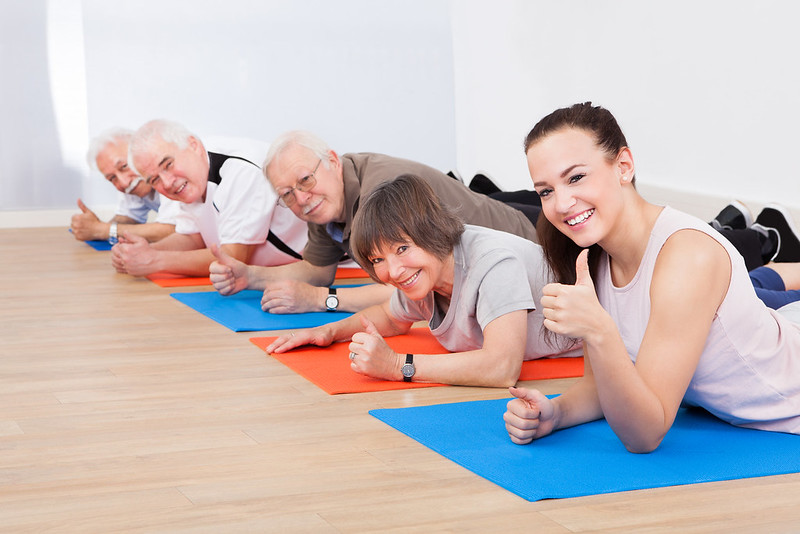Introduction
In the realm of fitness, Pilates stands as a cornerstone of holistic well-being. Originating in the early 20th century, this exercise method has transcended time and gained immense popularity worldwide. Pilates is more than just a workout; it’s a lifestyle that fosters balance, flexibility, strength, and mindfulness. In this comprehensive guide, we will dive into the depths of Pilates, uncover its core principles, explore its myriad benefits, and provide insights into how you can embrace this transformative fitness regimen.
Chapter 1: Unveiling the Pilates Method
1.1 Understanding the Origin
Pilates was created by Joseph Pilates, a German physical trainer, in the early 1900s. It initially gained recognition as a rehabilitation method for injured dancers and soldiers during World War I. Since then, it has evolved into a comprehensive system of exercises aimed at improving physical and mental well-being.
1.2 The Core Principles
At the heart of Pilates are six fundamental principles that guide its practice:
- Centering: Pilates emphasizes the development of a strong and stable core, often referred to as the “powerhouse.” All movements originate from this center.
- Concentration: Mindfulness is key in Pilates. Each movement requires focused attention to alignment, form, and breath.
- Control: Movements are deliberate and precise, promoting control over muscles and joints.
- Precision: Precision in execution ensures that each exercise is performed correctly, preventing injury and maximizing benefits.
- Breath: Proper breathing techniques coordinate with movement, enhancing oxygen flow and aiding in relaxation.
- Flow: Pilates exercises flow smoothly from one to the next, creating a sense of continuity and grace.
Chapter 2: The Benefits of Pilates Workouts
2.1 Core Strength and Stability
Pilates is renowned for its ability to develop a strong and stable core. A robust core not only improves posture but also reduces the risk of back pain and injury.
2.2 Flexibility and Mobility
Through a combination of stretches and controlled movements, Pilates enhances flexibility and joint mobility, making it an ideal choice for individuals of all ages.
2.3 Improved Posture
Pilates promotes awareness of body alignment and encourages proper posture. Regular practice can lead to significant improvements in posture, reducing strain on the spine and neck.
2.4 Muscle Tone and Strength
Pilates engages various muscle groups, helping to tone and strengthen the entire body. It’s particularly effective at targeting muscles that are often neglected in other forms of exercise.
2.5 Mental Well-Being
The mindful nature of Pilates fosters relaxation and reduces stress and anxiety. It’s a workout for both the body and the mind, promoting a sense of overall well-being.
Chapter 3: Different Styles of Pilates Workouts
3.1 Mat Pilates
Mat Pilates is the foundation of the Pilates method. It involves a series of exercises performed on a mat, focusing on body weight resistance. It’s accessible to all and requires minimal equipment.
3.2 Reformer Pilates
Reformer Pilates involves the use of a specially designed machine that provides resistance and support. It’s excellent for targeting specific muscle groups and can be tailored to individual fitness levels.
3.3 Clinical Pilates
Clinical Pilates is often used as a form of rehabilitation, guided by healthcare professionals. It’s beneficial for individuals recovering from injuries or with specific medical conditions.
3.4 Contemporary Pilates
Contemporary Pilates is a modern interpretation of the traditional method, incorporating elements of other fitness practices like yoga and dance. It offers a dynamic and evolving approach to Pilates.
Chapter 4: Starting Your Pilates Journey
4.1 Finding a Qualified Instructor
To fully experience the benefits of Pilates, it’s crucial to work with a certified instructor who can guide you through proper techniques and progressions.
4.2 Choosing the Right Studio or Gym
Select a studio or gym that offers a conducive environment for Pilates practice. Ensure that they have the necessary equipment and experienced instructors.
4.3 Starting Slowly and Progressing
Pilates is accessible to all, but it’s essential to start at an appropriate level and gradually progress. Your instructor will help tailor the practice to your fitness level.
Chapter 5: Personal Pilates Success Stories
We’ve gathered inspiring success stories from individuals who have embraced Pilates as part of their fitness journey. These real-life accounts showcase the transformative power of this exercise method.
Conclusion
In conclusion, Pilates workouts are a gateway to holistic health, combining physical strength with mental clarity. Its core principles guide practitioners toward balance, flexibility, and control, making it an ideal fitness regimen for individuals of all ages and fitness levels. To embark on your own Pilates journey, seek out a qualified instructor, choose a style that suits you, and enjoy the transformative benefits of this timeless practice.
Are you ready to experience the core essence of Pilates?
Discover more from Pilates All Ages
Subscribe to get the latest posts sent to your email.
